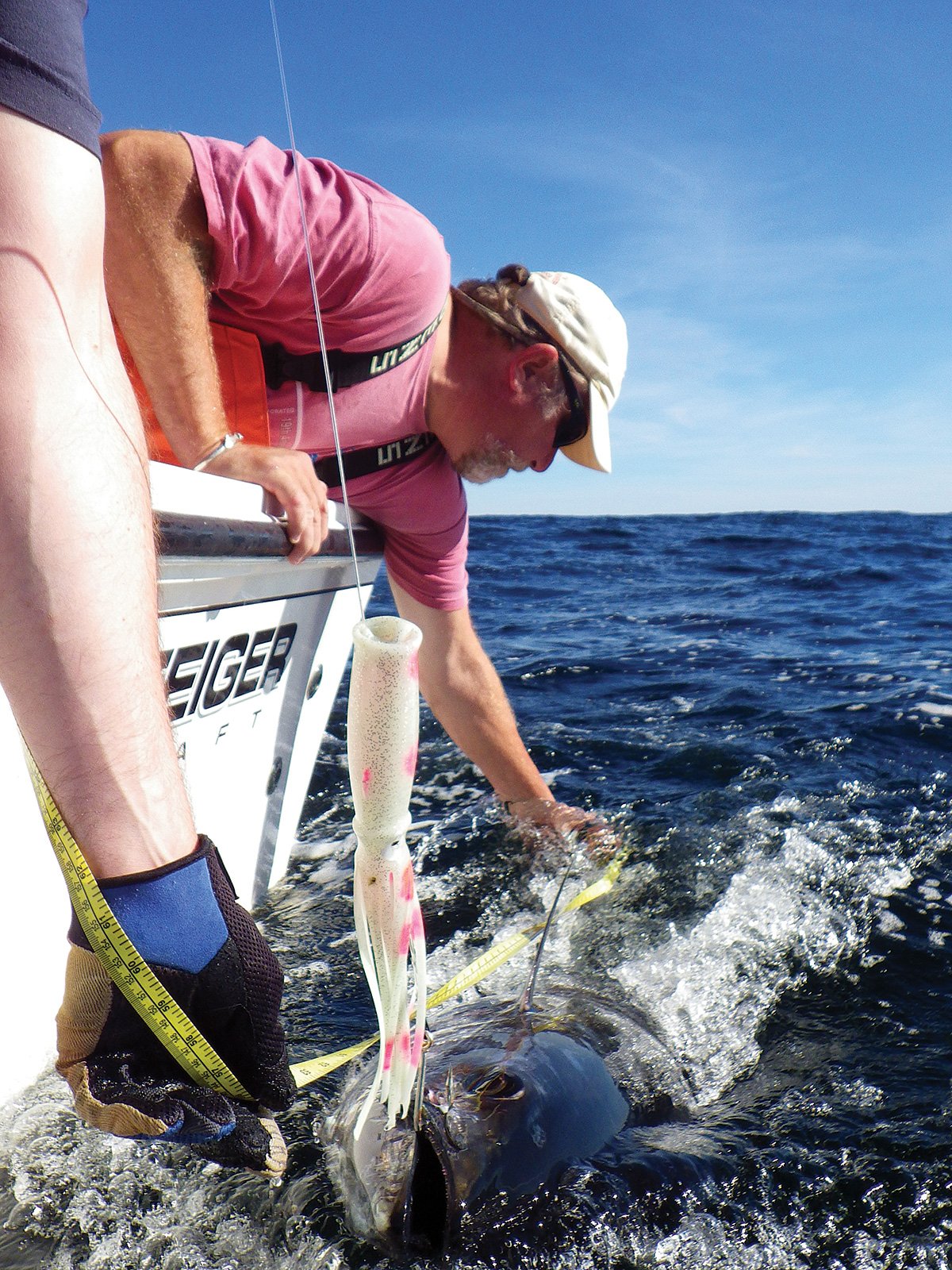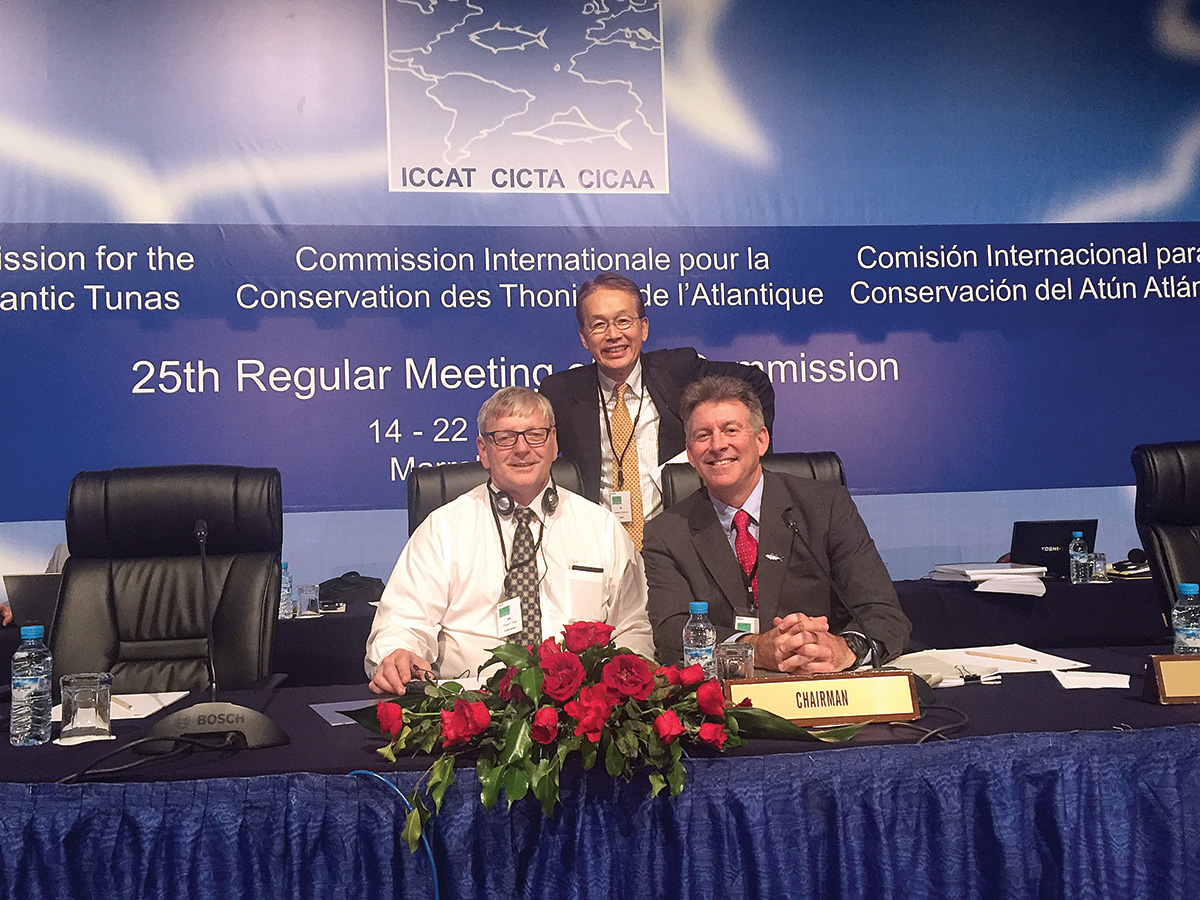
I recently returned from the 2017 annual meeting of the International Commission for the Conservation of Atlantic Tunas (ICCAT) which was held in Marrakech, Morocco. I was part of the United States delegation representing recreational anglers and the United States at the meeting. This was my first time attending ICCAT, and needless to say the whole experience was eye opening.
ICCAT is an inter-governmental fisheries organization responsible for the conservation of highly migratory species (HMS) that include Atlantic tunas, swordfish, billfish, and sharks that are found in the Atlantic Ocean and Mediterranean that migrate in these waters independent of national borders. ICCAT develops, manages and implements conservation and fishery management measures associated with HMS species. ICCAT decisions are binding by the US via the Atlantic Tunas Convention Act (ATCA). The ATCA authorizes NOAA’s National Marine Fisheries Services (NMFS) to create regulations, as necessary and appropriate, to implement conservation and management recommendations adopted by ICCAT. The NMFS manages the Atlantic US fisheries for HMS species under the authority of the ATCA and the Magnuson-Stevens Fisheries Conservation and Management Act.
ICCAT consists of 52 contracting parties including the European Union (28 nations), each of which has a voice at the table with more than 700 delegates. With relatively rare exceptions, almost all decisions are based on consensus where there are no deserting votes. This is a difficult task indeed that requires much negotiation between the members as well as behind closed doors.
I was impressed by the professionalism and hard work by the US delegation led by our head delegate John Henderschedt; Raymond Bogan, Recreational Commissioner; Geno Pineiro, Commercial Commissioner; and other recreational, commercial and NGO representatives plus representatives for the State Department and various individuals from NOAA, NMFS, and the Atlantic NMFS HMS offices. This was not all fun and games as the preparation and level of effort to prepare for and attend the meetings and to respond to and prepare proposed fishery management measures that required translation to Spanish, French and English with subsequent meetings before the main body as well as with ICCAT members resulted in few available hours to sleep and recharge daily. Between the jet lag and long days with no break through the final meeting date a grateful word of thanks to the hard work by the US team.
The good news is that there is a BFT quota increase for US fishermen in 2018, and we averted a complete shutdown of the North Atlantic shortfin mako (mako) fishery which was being pushed by select ICCAT delegates and NGOs. The North Atlantic albacore US quota will increase by nearly 20% in 2018. The North Atlantic swordfish quota will go down slightly, but the US quota will not be reduced in 2018.
Every year the US proposes measures that are already being implemented in US waters, such as the “shark fin attached” proposal requiring shark fins to be attached until returning to the dock, as well as the use of circle hooks for the international longline fleet to reduce turtle mortality. Every year Japan and China lead the way and object to such measures, and subsequently the measures do not pass.
A summary of the results of the big ticket items at ICCAT including the BFT and mako stock assessments and the status of the bigeye and yellowfin tuna stocks is described below.

Bluefin Tuna
For management purposes, Western and Eastern BFT stocks (which includes the Mediterranean) are managed by ICCAT separately. It appears that ICCAT has finally concluded that there is mixing of the Western and Eastern BFT stocks, but the quotas and stocks are still managed separately. There was no doubt that mixing is occurring based on my discussion of the observations by the European fleet at ICCAT. Historical studies of BFT tagged in the Gulf of Saint Lawrence continue to provide data indicating bluefin migrate to the eastern Atlantic and Mediterranean and ultimately return to the Gulf of Saint Lawrence waters and/or Western Atlantic.
Based on the ICCAT BFT stock assessment, the western tuna stock (as well as eastern bluefin tuna) was in sound shape with a recommended increase in quota from 2,000 metric tons per year to a maximum of 2,500 metric tons per year. This is consistent with observations of fruitful numbers of bluefin in our US waters. There was a significant difference in opinion with certain NGOs who did not agree with the ICCAT stock assessment and recommended that the annual Western BFT stock quota be reduced to 1,000 metric tons per year. Ultimately, the Western Atlantic BFT quota increased to 2,350 metric tons (previously 2,000 metric tons per year) resulting in an increase of 214 metric tons and/or a 17% quota increase over the next three years for US fishermen. The assumed level of BFT landings has a high probability of avoiding overfishing in the next three years and provides for sustainability and stability of the BFT fishery.
The annual US BFT quota is separated into commercial and recreational quotas that are established by ICCAT and NMFS. The NMFS manages the US BFT fishery; landings are reported to make in-season adjustments to bag limits and implement closures in order to not exceed our annual quota as needed. The 2017 BFT bite was spectacular early in the season in southerly waters south of the demarcation line (39°18’N, Great Egg Inlet, NJ), and through the summer and early fall north of the demarcation line, which resulted in early giant bluefin tuna closures. North of Cape Cod water temperatures were favorable and critical forage fish such has herring and bunker were observed in fruitful numbers near shore, which appears to have resulted in landings within a few miles of the beach instead of typically transiting 30 or more miles offshore to land BFT.
Sound management of the BFT fishery has returned the BFT stock, as well as fishery north and south of the demarcation line, to credible numbers that we can enjoy. As we look to 2018, we look to NMFS proactively managing the quota based upon 2017 landing trends and adjust the daily bag limit for giant BFT to avoid season closures and extend the season for all north and south of the demarcation line.
North Atlantic Shortfin Mako
The ICCAT scientific committee (SCRS) conducted a stock assessment in 2017 which concluded that the mako stock is over fished and over fishing is occurring. A complete shutdown of the mako fishery was being pushed by select NGOs with a motion by the Japanese delegation that could have completely shut down the mako fishery along the Atlantic Coast. That initiative was met with strong resistance by the US.
The US introduced a proposal to end shortfin mako overfishing in 2018 and begin rebuilding the stock which considers the biology of this late-maturing species to avert a complete shutdown. Presently a HMS permitted vessel can retain one 54-inch fork length mako per trip. There is no lack of 54-inch makos in our waters. The larger, sexually-mature 72-inch makos are less prevalent. This can be attributed to a variety of factors, not necessarily from overfishing in US waters, but internationally that is another story.
The final agreement addressed measures to reduce fishing mortality and proposed to further strengthen data collection, especially for the international commercial fleet, while protecting opportunities for US recreational and commercial fishermen to retain small amounts of shortfin mako sharks. According to NOAA Fisheries, the agreement also calls for additional scientific advice on biologically important areas and the effectiveness of various mitigation measures in increasing the survivability of shortfin mako sharks, including circle hooks.
There are significant measures, which will be implemented that impact the foreign commercial fleet fishing primarily from Europe and Northern Africa and/or beyond US waters that are primarily responsible for the poor status of the mako fishery. There are significant conservation measures that have already been implemented by the US recreational and commercial fleet to address makos that are yet to be implemented by the international community. Needless to say the U.S averted a complete zero retention of makos with new larger mako minimum size limit pending in 2018.
Yellowfin and Bigeye Tuna
South Africa as well as the US and several other member nations recommended the development of stronger measures to protect yellowfin and bigeye juvenile breeding grounds located in the Gulf of Guinea off the coast of Africa. This is an area of juvenile recruitment for skipjack, yellowfin and bigeye tuna that migrate to our US waters. This is prime fishing grounds for the international commercial purse seine, longline and artisanal fleet. Management measures including an assessment of the use of fish aggregating devices (FADs) in the Gulf of Guinea will be assessed by ICCAT as a priority in 2018. A bigeye tuna stock assessment is scheduled for 2018. Our eyes will be focused on the stock assessment and management measures for these species of importance to the recreational and commercial fleet in US waters.




